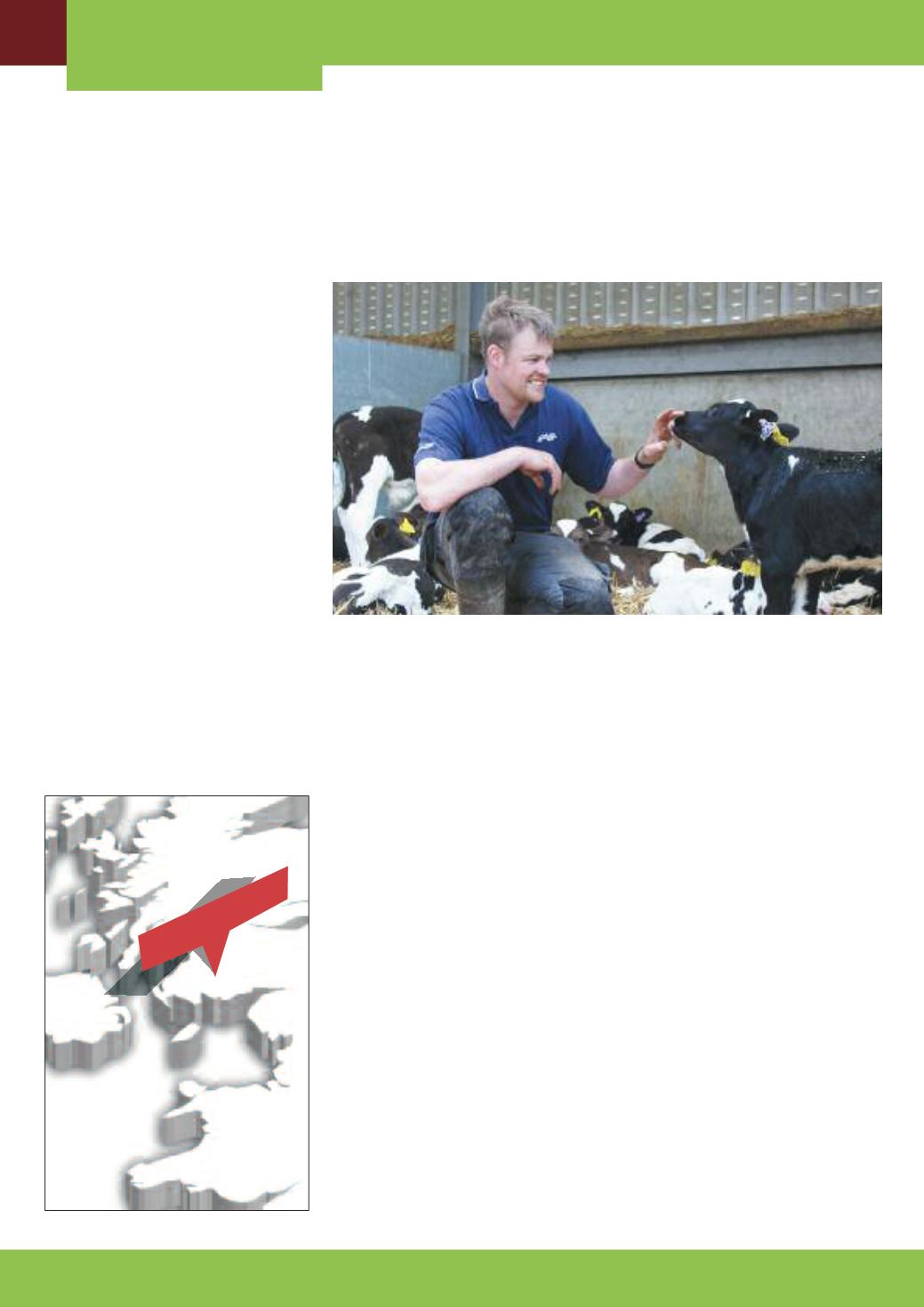
BVD SUPPLEMENT
LIVESTOCK MATTERS - BVD SUPPLEMENT
BVD monitoring using the latest
testing strategies is helping farms
in Scotland to eradicate the disease
and proving that elimination is an
achievable target for all UK
producers.
Vet Roddy Dunse of Dunmuir Vet
Group believes the development of ear
tag tissue testing for BVD has helped
make it easier for all farmers to
eradicate what is a complex disease.
The tag, which automatically takes
a tissue sample for analysis when
attached, can be used on any age of
animal and is being widely adopted
in Scotland as part of farm specific
control strategies.
BVD represents one of the biggest
economic drains to the UK dairy
industry causing reduced fertility and
higher levels of pneumonia and scours
in calves.
As part of Scotland’s BVD eradication
scheme, all cattle producers must carry
out regular “check tests” for exposure
to BVD. This can involve blood
sampling, ear tag tissue testing of
youngstock or bulk milk sampling.
Roddy believes “check testing” of 9-18
month old animals is the “gold
standard” for establishing status and
getting on top of the disease.
“As part of a “check test” a sample of
9-18 months old animals should be
tested for BVD antibodies. At this age
they won’t have any maternal
antibodies so any positive result will be
because of exposure to the virus,”
explains Mr Dunse.
He says with any antibody positive
result it is then worth bleeding or ear
tag tissue testing the whole herd for
virus to identify and cull Persistently
Infected (PI) animals straight away.
An unborn calf can become a PI when
a naive dam is exposed to BVD virus
during early pregnancy. The calf is
unable to mount an immune response
and thinks the virus is part of its body. It
is then born carrying and shedding the
virus for life. PIs are one of the main
routes of disease spread and as such,
identifying and culling them is crucial to
disease control.
“If you get an antibody positive result
in your check test, it is worth seizing
the bull by the horns and testing all
adult cattle for virus rather than waiting
for calves to be born and then ear tag
tissue testing them. This will mean PI
animals can be identified and culled. It
may cost more money in the short
term, but it will be hugely beneficial in
the long term,” says Roddy.
If the breeding herd is virus negative it
means there is no adult PI. However,
farmers will need to ear tag tissue test
calves to check that a PI has not been
born as a dam can test virus negative
and produce a PI calf.
Dumfries and Galloway dairy farmer
Kerr McMinn, who runs a 650-cow
herd at Lochdougan Farm, Castle
Douglas, has been using blood testing
and more recently ear tag tissue testing
in his replacement heifers to identify
and cull any PIs.
In the past, bulk milk testing revealed
exposure to BVD and Mr McMinn
WHITE TAG SCHEME AIDING
NATIONAL DISEASE ERADICATION
Kerr McMinn likes the BVD Check Tag scheme as it provides assurance to
calf buyers that animals have been tested.
Dunmuir Vet Group


